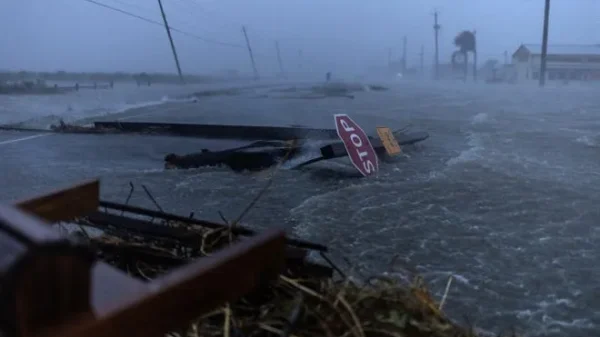In recent weeks, scientists have been working to understand the unusual phenomenon of record-high sea surface temperatures in the North Atlantic. According to data from the National Oceanic and Atmospheric Administration (NOAA) and the University of Maine, the North Atlantic has warmed to a record-breaking 22.7 degrees Celsius on June 11th, surpassing the previous record by 0.5 degrees. This anomaly is unprecedented and has raised concerns about its impact on atmospheric temperatures and weather patterns.
One group of scientists has suggested that a change in atmospheric wind patterns is the primary cause of this record-breaking warmth. Dr. Melissa Lazenby, a lecturer in climate change at the University of Sussex, believes that the change from a low-pressure system to a high-pressure system over the North Atlantic has disrupted the typical circulation of air and led to warmer temperatures. This change in wind direction has resulted in more ocean warming over the region.
Professor Michael Man of the University of Pennsylvania has also pointed out that the lack of Saharan dust, which normally has a cooling effect on the oceans, could also be contributing to the anomaly. He emphasized that the anomaly underscores the interplay between human-caused warming and natural variability.

Sea Surface Temperatures Reaching Record High
Dr. Lazenby agrees that human-induced climate change is playing a significant role in the anomaly, as oceans are now warmer due to emissions. El Nino events, which are defined by warmer-than-average sea surface temperatures in the Pacific Ocean, are also being affected by climate change. Dr. Lazenby notes that El Nino events are becoming more extreme due to climate change, which makes it difficult to separate natural variability from human-induced warming.
The current El Nino event is expected to amplify the warming trend in the North Atlantic and push the global average temperature beyond 1.5 degrees Celsius for the first time on record. However, it is unclear whether the current warming trend will continue or if it will eventually return to normal.
Meteorologist Dr. Jon Robson from the University of Reading believes that El Nino will dominate the global temperature trend next year, although the North Atlantic’s recent warmth could contribute to continuing high temperatures. He also pointed out that warmer sea surface temperatures in the tropical North Atlantic are normally associated with more storms, but El Nino events often suppress these storms.
Dr. Lazenby emphasized that warmer oceans provide more available energy for tropical systems and can cause stronger storms if other factors allow it. However, she noted that this does not necessarily mean that there will be more landfalls, as the number of hurricanes and tropical systems overall may be reduced due to El Nino.
This anomaly has sparked renewed interest in the complex interplay between human-induced climate change and natural variability, highlighting the need for continued research and monitoring of global climate trends. The impact of this anomaly on global weather patterns and atmospheric temperatures remains unclear, but scientists are working tirelessly to better understand the complexities of climate change.











































